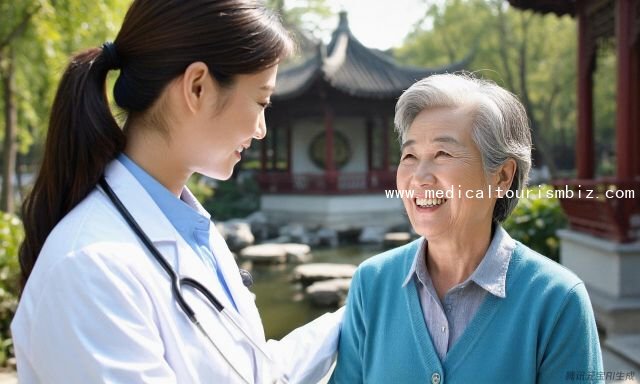Is China friendly to medical tourists?

China's attitude towards medical tourists is generally open and gradually improving, but the degree of friendliness is affected by a variety of factors such as policy, distribution of medical resources, service support, etc., and needs to be analyzed on a case-by-case basis. The following is an explanation from the dimensions of policy environment, medical attractiveness, service support and potential challenges:
Policy Environment: Permitted but Compliance Required
China does not prohibit foreign tourists from entering the country for medical purposes, but they are required to comply with normal immigration and medical-related regulations:
1. Visa requirements: Foreign patients need to apply for a visa according to the type of medical treatment. If they need to stay in China for more than the period of short-term tourist visa (L visa) (usually not more than 6 months), they need to apply for the Invitation Letter for Foreigner's Medical Visa in China from the medical institutions in China and apply for the Medical Visa (M visa) with this letter (the period of stay is usually not more than 1 year, which can be extended).
2. Legitimacy of medical services: foreign patients receiving treatment in regular medical institutions (e.g., public tertiary hospitals, legal private hospitals) are protected by law.
Attractiveness of medical care: international competitiveness in some fields
China's technological, cost or specialty advantages in certain medical fields make it attractive to specific medical tourists:
1. Traditional medicine (TCM): TCM treatments such as acupuncture, tui-na, and herbal medicine are popular in Southeast Asia, Europe and the United States due to their proven efficacy and fewer side effects. Some Chinese hospitals (e.g. Beijing Guang'anmen Hospital and Longhua Hospital of Shanghai University of Traditional Chinese Medicine) have international medical departments specializing in receiving foreign patients.
2. Specialized treatment: Some tertiary hospitals have reached international level in the fields of tumor (e.g. radiotherapy, targeted therapy), cardiovascular surgery (e.g. interventional therapy), organ transplantation (e.g. liver transplantation), orthopaedics (e.g. joint replacement), and so on, and the cost is usually lower than that in developed countries in Europe and the United States (about 1/3 to 1/2).
3. Cost-effective advantage: Compared to the U.S., Europe or Japan, China's medical costs are lower, and some private hospitals (e.g., UFH, USCHK) offer internationalized services, attracting middle- and high-income foreign patients.
Service Support: Gradual Improvements but Differences Remain
The service support for international patients at China's large medical institutions has been gradually optimized, but the level varies by region and hospital:
1. International medical departments: Tier-1 city tertiary hospitals (e.g., Peking Union Medical College Hospital, Shanghai Ruijin Hospital, and Guangzhou Zhongshan First Hospital) have generally set up international medical departments, providing services such as English consultation guidance, translation (some hospitals are equipped with professional medical interpreters), and cross-border settlement, and some of them have also cooperated with international insurance companies to support direct payment.
2. Language barriers: Although some hospitals provide translation services, accurate translation of specialized medical terms may still be insufficient, requiring patients to confirm or hire a reliable interpreter.
3. Process convenience: some hospitals have opened special lines for international patients to make appointments, but registration, examination and medicine collection still need to adapt to the Chinese medical process (e.g., longer queuing time), which may not be friendly enough for first-time patients in China.
Potential challenges and constraints
Despite China's openness to medical tourists, some practical obstacles remain:
1. Cultural and customary differences: TCM's concept of evidence-based treatment and the use of traditional Chinese medicine may conflict with the medical system of the patient's home country, requiring additional communication.
2. Regulation and risk: some informal intermediaries may exaggerate the efficacy and conceal the risk, resulting in damage to patients' rights and interests; a small number of private hospitals have overmedication problems, requiring patients to choose carefully.
Summary
China is friendly to medical tourists as a whole, especially in the field of traditional Chinese medicine and some specialized treatments with unique advantages, and the policy allows compliance with medical treatment. However, the actual experience is limited by the level of hospital services, language communication, cost transparency and other factors. For patients planning to come to China for medical treatment, it is recommended to consult with the international department of regular hospitals in advance, choose regular channels, and prepare for language and cultural adaptation.
Document dated 2025-07-15 09:15 Modify
- Related Reading
- 1、How Much Does Medical Tourism in China Cost?
- 2、Exploring Medical Tourism in China: A Comprehensive Guide from Advantages to Considerations
- 3、Key Considerations for Medical Tourism in China: Cultural Differences and Healthcare Practices
- 4、China Medical Tourism Entry Procedures: A Comprehensive Guide to Customs, Quarantine, and Airport Pic
- 5、How Does China's Medical Tourism Meet the Diverse Needs of International Patients?
- 6、China Medical Tourism Visa Application Process: Distinguishing Medical Visas from Tourist Visas
- 7、Medical Tourism Costs in China and Hospital Accreditation: Are JCI-Accredited Institutions More Expen
